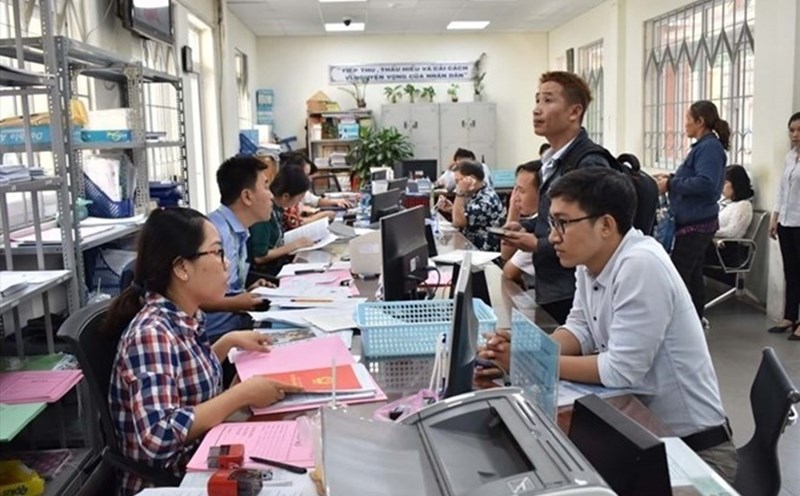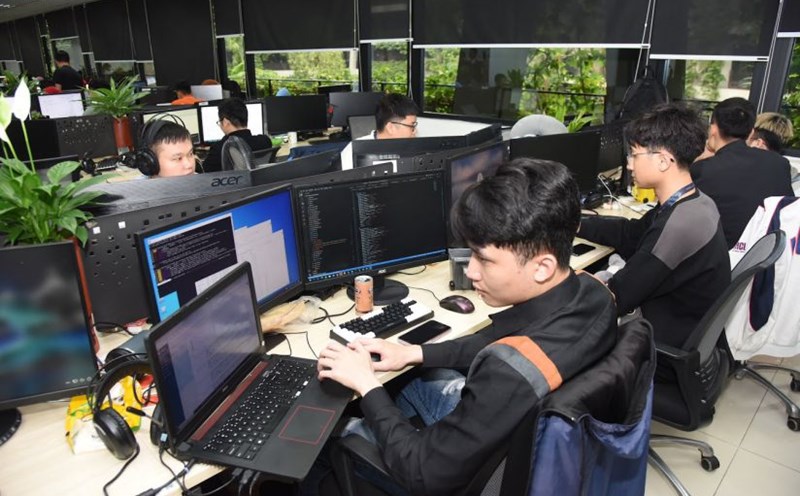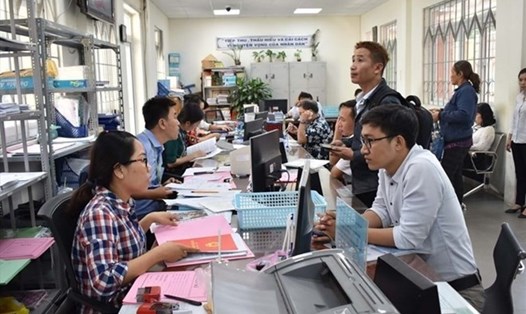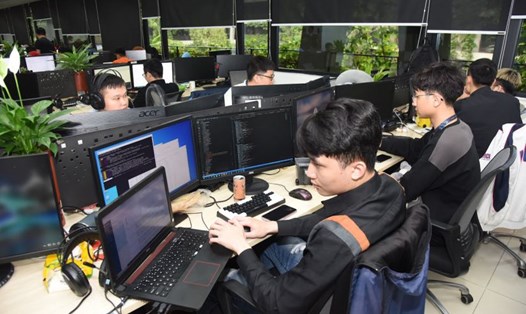Challenges but still open up opportunities
Assessing the challenges of AI and artificial intelligence to the job market, Mr. Vu Quang Thanh - Deputy Director of Hanoi Employment Service Center said that not only is AI difficult, it still opens up opportunities for workers such as opportunities to participate in new service industries (smart logistics, e-commerce, delivery services, online customer care...).

Currently, short-term training programs and vocational training applications using technology (using CNC machines, robots, smart line operators) also help increase job opportunities for unskilled workers. Many opportunities in the fields of software development, artificial intelligence, big data, cybersecurity, digital system governance for highly qualified workers.
In reality, there will be some jobs and occupations that are "inflated" by AI, but in addition, many jobs that human resources take on will be much more leisurely, while labor productivity increases thanks to AI, Mr. Thanh said that currently, AI is not only an effective support tool for people in work but is also gradually replacing humans in certain jobs. The important thing is their adaptability.
AI will remove some repetitive tasks, but at the same time open up new tasks that we currently not even imagine. When properly applied, many tasks took hours, now only a few minutes to complete. Workers can spend time on creative, strategic tasks or those that require human interaction, said Mr. Thanh.
The most ryngic occupations (likely to be replaced by AI):
+ Repeating professions, processes: data entry, file processing, elementary accounting, basic content censorship.
+ Production industry, unskilled labor: simple line work, warehousing, loading and unloading, quality control.
+ Basic service industry: online customer care according to the scenario, phone sales, low-level technical support.
+ Some primary creative fields: writing simple advertising content, basic translation, pre-made sample graphic design.
Update trends to affirm the role of the "backbone" of the Law on Employment
Former Deputy Director in charge of the Department of Employment Le Quang Trung said that AI and digital technology are both a "push" and a "push" for workers, businesses and the recruitment process. Workers are forced to continuously improve their skills and update new knowledge. Businesses must invest in digital transformation, while the recruitment process is increasingly based on data and technology instead of simple intuition.
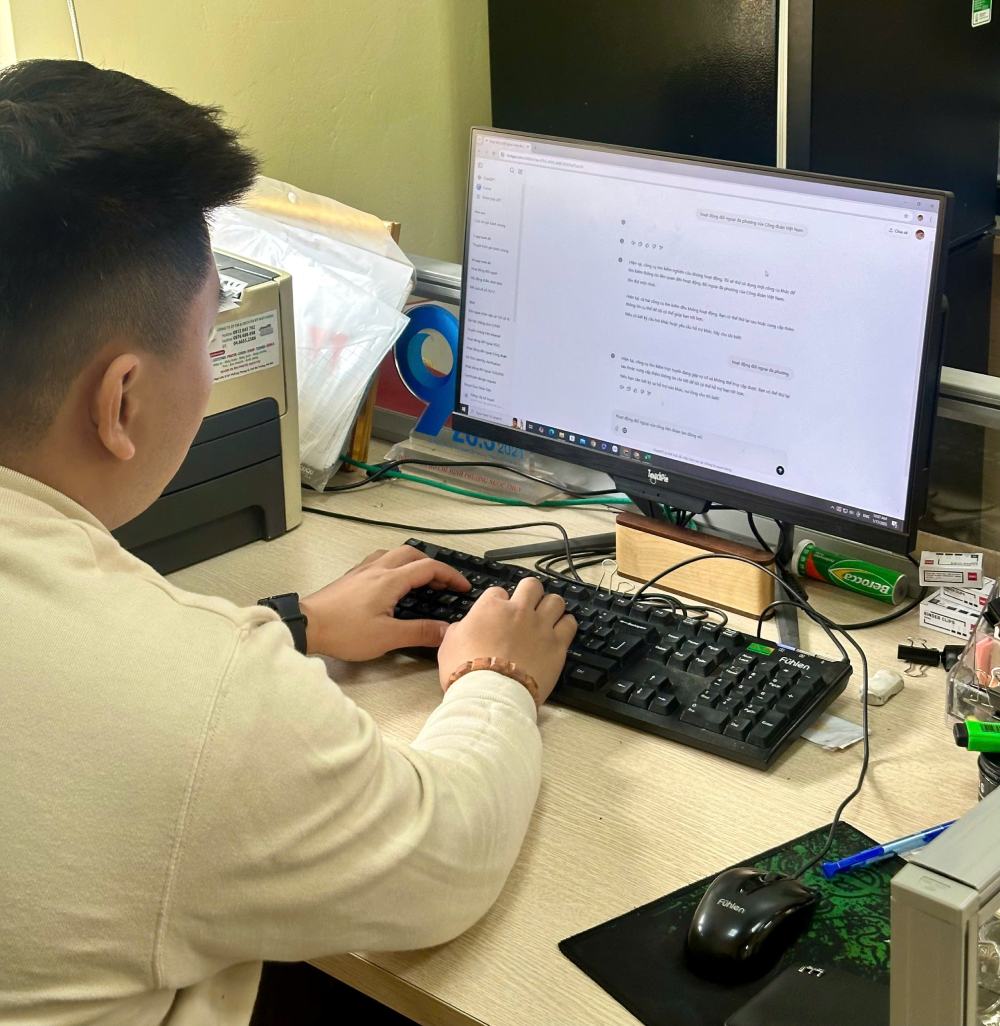
Regarding the impact of AI and digital technology on workers, the opportunity is to help increase labor productivity thanks to AI supporting calculation, data processing, and automating many complex stages. Thereby, workers are free from repetitive jobs, have more time for creativity, management, skill development, and open up new job opportunities in the fields of data, e-commerce, smart manufacturing, digital marketing, and multi-channel customer care.
The challenge is that unskilled workers and low-skill workers face the risk of job loss when robots, production chains, and AI replace them. The pressure to study continuously (reskilling, upskilling) to avoid falling behind. The digital gap is getting larger between workers with technology skills and those with less access to technology.
Mr. Ha Anh Tuan - CEO of Vinalink Company commented that the impact of AI and digital technology on businesses is to help reduce operating costs thanks to automation, robots, and smart management systems; increase competitiveness when applying AI to market analysis, customer care, and supply chain management; and increase international scale thanks to digital technology and online platforms.
Regarding challenges, the demand for high-quality human resources exceeds market supply capacity, causing a shortage of digital labor; initial training and digital transformation costs are quite large, especially for small and medium enterprises; international competition pressure is higher, when domestic enterprises have to compete with corporations that have mastered technology.
Mr. Le Quang Trung said that, due to the impact of AI and digital technology, some training contents for workers should be updated so that when they benefit from the policies from the 2025 Employment Law, workers will both benefit from the policies and show the updated policies for the actual developments of the labor market. We should also apply technology, update trends and even build a "recruitment map" for each industry and field to help employment service centers clearly affirm their role. By implementing these contents, the Law on Employment will be the "backbone" of the labor market.
Article 30. Unemployment insurance regimes
1. Unemployment insurance regimes include:
a) Consulting and introducing jobs;
b) Support workers to participate in training and improve their professional skills;
c) Unemployment benefits;
d) Support employers in training, fostering, and improving professional skills to maintain jobs for workers.
2. In case of crisis, economic recession, natural disaster, fire, enemy disaster or dangerous epidemic, based on the actual situation and the balance of the Unemployment Insurance Fund, the Government shall prescribe the reduction of unemployment insurance payment, cash support or other support.

